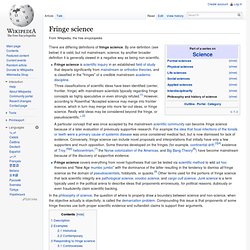 Group selection lost out to kin selection in the 1960s and 1970s as
an explanation for cooperative behaviour. Group selection went on to
lead an underground existence - in which a few remaining proponents
sought out ways to find things which group selection explained which
kin selection did not.
Group selection lost out to kin selection in the 1960s and 1970s as
an explanation for cooperative behaviour. Group selection went on to
lead an underground existence - in which a few remaining proponents
sought out ways to find things which group selection explained which
kin selection did not.We now know that modern versions of these theories make the same predictions. So there isn't really anything that group selection can explain that kin selection cannot. However this didn't stop the group selection proponents from trying to find these types of phenomena. Indeed, if they had succeeded, fame and glory would have awaited them.
This quest took group selection to the borderlands of science. Kin selection was uncontroversially used to explain obvious adaptations - such as breast feeding, parental care and nepotism. Group selection picked more controversial targets - senescence, the maintenance of sexual recombination and cultural evolution. The theme of these topics seems to have been avoiding rapid refutation of: "kin selection explains that without invoking group selection".
This quest now seems to be mostly over. Most of the group selection enthusiasts have publicly given up their original quest - and have accepted the equivalence between kin selection and group selection.
However the topics group selection is invoked to explain still seem to be skewed away from those that kin selection is used to explain. As a result, group selection is generally offered as an explanation in areas where the theory doesn't function well. This seems like a hangover which group selection is still recovering from.
 This article will claim that "multi-level selection" and "group selection" should not be understood as being synonyms.
This article will claim that "multi-level selection" and "group selection" should not be understood as being synonyms.